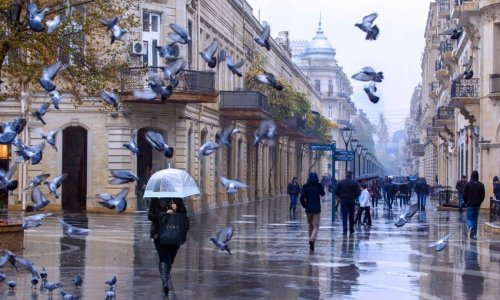Follow us !
Surgeons will reconstruct road accident victim's face using 3D printing
Society
23:32 | 18.11.2013

Surgeons will reconstruct road accident victim's face using 3D printing
This computer image shows how specifically-designed plates will be used to reconstruct a road accident victim's face using 3D printing technology.A team of British surgeons are poised to carry out a pioneering operation, which will restore the symmetry of a man’s face using new parts produced by a printer.The unaffected side of the biker’s face has been used to create a mirror image, which will enable perfect facial reconstruction.Computer images are being used to create titanium implants using Additive Manufacturing, which commonly known as 3D printing.The images are used both to design guides to cut and position facial bones with pinpoint accuracy and create tailor-made implants for the patient.The guides and implants are being produced in medical-grade titanium in Belgium, at one of the world’s few specialist 3D printing facilities.Surgeons in Swansea, south Wales, used an X-ray CT scan to create minutely detailed three-dimensional images to design the bespoke implants.The futuristic work is led by consultant maxillofacial surgeon Adrian Sugar, at Morriston Hospital, Swansea, run by Abertawe Bro Morgannwg University Health Board.Mr Sugar said: ‘Effectively, we have done the surgery in virtual reality so that we can mirror this in real life. You cannot make a mistake on a face.’The man's injuries were so severe that when he was admitted to hospital, doctors focused on life-saving surgery rather than facial reconstruction.While half of his face was severely damaged, one side was unaffected. Mr Sugar has used a CT scan of this side of the face as a template to create implants in titanium using 3D printing.The operation will involve breaking and cutting several facial bones once again, but the 3D printing process will also produce guide devices allowing the surgeons to reposition bones with pinpoint accuracy.Mr Sugar said: 'We have a good chance of correcting 70 to 80 per cent of the deformity and we will make this man look a lot better.'The work is considered so groundbreaking and radical it already features in an exhibition at London’s Science Museum, even before the operation itself has been carried out.Peter Evans, a reconstructive scientist and Maxillofacial Laboratory Services manager, said: 'The patient suffered trauma and had multiple injuries across his body, including some quite severe facial injuries.'He underwent emergency surgery at the time and we are now at the stage where we can do a proper reconstruction of his face.'The project is the work of the Centre of Applied Reconstructive Technologies in Surgery (Cartis), established in 2006 as a partnership between Morriston Hospital’s Maxillofacial Unit and Product Design and Research (PDR) based at Cardiff Metropolitan University.Cartis aims to make Wales a world leader in the research, development and application of advanced medical technologies in surgery.Mr Sugar and Mr Evans worked with PDR’s Sean Peel and Ffion O’Malley to virtually plan the complex surgery, which will involve repositioning the patient’s facial bones.Mr Evans added: 'We have done everything up to the point of surgery. The concept of the operation has been virtually designed and we hope to do the work very soon.'The patient’s facial symmetry will be restored so he should be back to normal as far as his facial looks are concerned.'Discussions are now taking place to plan when the surgery itself will take place. The identity of the patient concerned has not been revealed.Referring to the London exhibition, Mr Evans said: 'The exhibition is all about cutting-edge activities in this area of work so to have this case appear there is amazing.'Called 3D: Printing The Future, the exhibition continues at the Science Museum until July 1 next year.(dailymail.co.uk)ANN.Az










